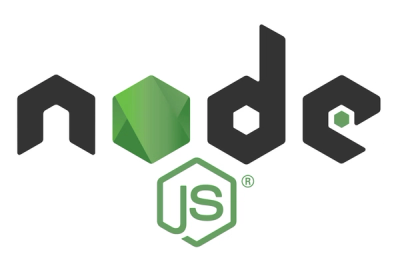
Security News
Django Joins curl in Pushing Back on AI Slop Security Reports
Django has updated its security policies to reject AI-generated vulnerability reports that include fabricated or unverifiable content.
ember-cli-react-fork
Advanced tools
Note: This is a fork of https://github.com/AltSchool/ember-cli-react due to its inactivity. It uses the same addon name so it is almost a drop-in replacement.
Use clean React component hierarchies inside your Ember app.
Install the addon in your app:
yarn add --dev ember-cli-react-fork
# OR
npm i -D ember-cli-react-fork
# This triggers addon blueprint to do necessary setup
ember generate ember-cli-react
NOTE: ember-cli-react relies on a custom resolver to discover components.
If you have installed ember-cli-react with the standard way then you should be
fine. Otherwise, you will need to manually update the first line of
app/resolver.js to import Resolver from 'ember-cli-react/resolver';.
ember-browserify has been replaced
with ember-auto-import. To migrate
to 1.0, there are several steps you need to take:
ember-browserify from your project's package.json (if no other
addon is using).ember-cli-react and make sure blueprint is run ember generate ember-cli-react.npm: prefix from all import statements.Then you should be good to go :)
Write your React component as usual:
// app/components/say-hi.jsx
import React from 'react';
const SayHi = props => <span>Hello {props.name}</span>;
export default SayHi;
Then render your component in a handlebars template:
{{say-hi name="Alex"}}
NOTE: Currently, ember-cli-react recognizes React components with .jsx
extension only.
Your React component can be used in block form to allow composition with existing Ember or React components.
{{#react-panel}}
{{ember-say-hi name="World!"}}
{{/react-panel}}
The children of react-panel will be populated to props.children.
Note that if the children contains mutating structure (e.g. {{if}},
{{each}}), you need to wrap them in a stable tag to work around this Glimmer
issue.
{{#react-panel}}
<div>
{{#if isComing}}
{{ember-say-hi name="World!"}}
{{else}}
See ya!
{{/if}}
</div>
{{/react-panel}}
Although this is possible, block form should be used as a tool to migrate Ember to React without the hard requirement to start with leaf components. It is highly recommended to have clean React component tree whenever possible for best performance.
You can name your React component files using either the Ember convention of
kebab-case or the React convention
of PascalCase
.
{{!-- Both `user-avatar.jsx` and `UserAvatar.jsx` work --}}
{{user-avatar}}
Referencing your React components with PascalCase in handlebars is also
supported when invoked using react-component.
{{!-- OK! --}}
{{react-component "user-avatar"}}
{{!-- OK! --}}
{{react-component "UserAvatar"}}
{{!-- Single worded components are OK too! --}}
{{react-component "Avatar"}}
Whenever there is a conflict, component files with React-style convention will be used.
Examples:
SameName.jsx and same-name.jsx exist, SameName.jsx will be
usedSameName.jsx and same-name.js (Ember) exist, SameName.jsx
will be usedIf an Ember component and a React component has exactly the same name but
different extension (same-name.js and same-name.jsx), the file with .js
extension will be overwritten with the output of same-name.jsx. We are still
looking at ways to resolve this.
A more complete example which demonstrates data binding and how to handle actions from within React components.
{{todo-list
onToggle=(action onToggle)
todos=model
}}
Completed {{completedTodos.length}} todos
import React from 'react';
import TodoItem from './todo-item';
export default function(props) {
return (
<ul>
{props.todos.map(todo => {
return <TodoItem key={todo.id} todo={todo} onToggle={props.onToggle} />;
})}
</ul>
);
}
import React from 'react';
import ReactDOM from 'react-dom';
export default class TodoItem extends React.Component {
render() {
let todo = this.props.todo;
return (
<li>
<input
type="checkbox"
checked={todo.isComplete}
onChange={this.props.onToggle.bind(null, todo.id)}
/>
<span>{todo.text}</span>
</li>
);
}
}
There is no React link-to equivalent for linking to Ember routes inside of
your React code. Instead pass action handlers that call transitionTo from an
Ember route or component.
In order to create minified production builds of React you must set
NODE_ENV=production.
[2.0.1] - 2021-09-11
FAQs
Use React component hierarchies in your Ember app.
The npm package ember-cli-react-fork receives a total of 3 weekly downloads. As such, ember-cli-react-fork popularity was classified as not popular.
We found that ember-cli-react-fork demonstrated a not healthy version release cadence and project activity because the last version was released a year ago. It has 1 open source maintainer collaborating on the project.
Did you know?

Socket for GitHub automatically highlights issues in each pull request and monitors the health of all your open source dependencies. Discover the contents of your packages and block harmful activity before you install or update your dependencies.

Security News
Django has updated its security policies to reject AI-generated vulnerability reports that include fabricated or unverifiable content.

Security News
ECMAScript 2025 introduces Iterator Helpers, Set methods, JSON modules, and more in its latest spec update approved by Ecma in June 2025.

Security News
A new Node.js homepage button linking to paid support for EOL versions has sparked a heated discussion among contributors and the wider community.